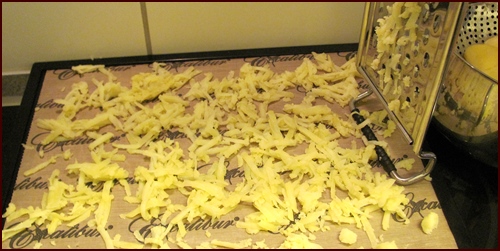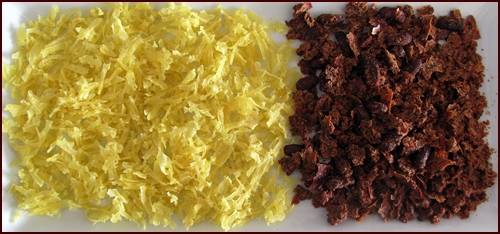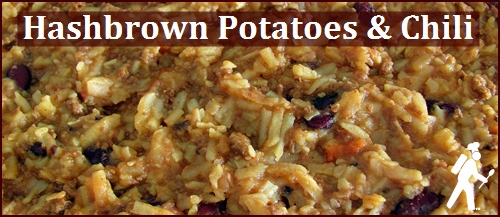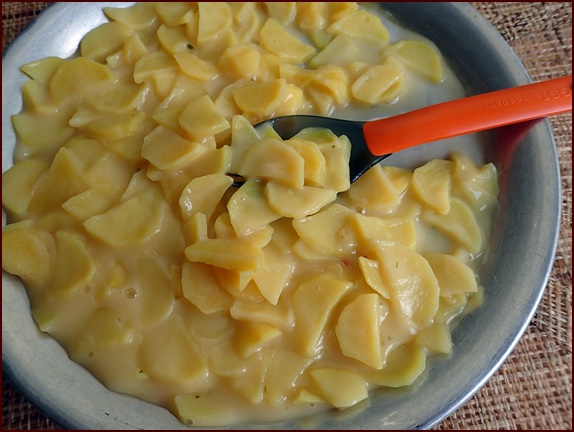| Back to Back Issues Page |
 |
|
January 2015 Trail Bytes: How to Dehydrate Hashbrowns, Hashbrowns & Chili Recipe January 28, 2015 |
| Hello, If potatoes grew on trees, they would be the national fruit of Switzerland. I have eaten more potatoes since marrying Dominique in 2011 than I ate the previous ten years. Dominique loves potatoes. I include them in soups, mash them as a side for baked chicken, chunk them up in beef stew, and bake them in cottage pie with ground beef, peas and carrots. When Dominique takes over the kitchen, she makes potatoes au gratin, potatoes with melted Raclette cheese, and rösti. The only potatoes you don’t see much of in Switzerland is French fries. This is the land of sausages after all, not hamburgers and chicken nuggets. I have been watching Dominique make rösti for several years. It’s very similar to hashbrown potatoes. She steams and coarsely grates the cooled potatoes, then fries them in butter. She often adds cheese. I wanted to make something similar for a backpacking meal, but without using butter to ensure a long shelf life. Taking inspiration from Waffle House, the American restaurant chain that serves more hashbrowns than anybody else in so many ways… “Scattered, smothered, covered, chunked, diced, peppered, capped, topped or country,” I decided to go with topped – hashbrowns and chili. How to Make & Dehydrate Hashbrown PotatoesSteam small to medium size white potatoes with the skins on for fifteen minutes. You want them to be fully cooked, but not too soft.After potatoes cool enough to handle, remove the skins.
Dehydrate at 135°F (57°C) for approximately six hours or until crispy. You can flip the potatoes over after four hours to speed drying. They will hold together like a mat. Break into smaller pieces when dry.
Hashbrowns and ChiliServes 1Ingredients:
Click the chili link for my chili recipe.
Alternatively, you can prepare this meal freezer bag or thermos style by adding boiled water to the ingredients in the container. Wait about twenty minutes for best results. If preparing in a thermos for a meal that will be eaten several hours later, increase water by ¼ cup. There is no end to the wonderful backpacking meals you can make with dehydrated grated potatoes. You can substitute them for any of the potato bark recipes in Recipes for Adventure. Let me know what creations you come up with. I’m thinking hashbrowns with cheese, ground beef, tomatoes, peppers and onions would be mighty fine rolled up in a tortilla. I believe Waffle House would call that, “All the way.”
Warmest regards, Chef Glenn & Dominique Recipes for Adventure Books
Visit my Facebook page for the lastest posts. A few days ago I posted a recipe for Fruit Mash Leather using bananas, kiwis and blueberries – mashed instead of blended. |
| Back to Back Issues Page |




